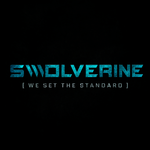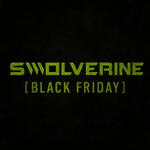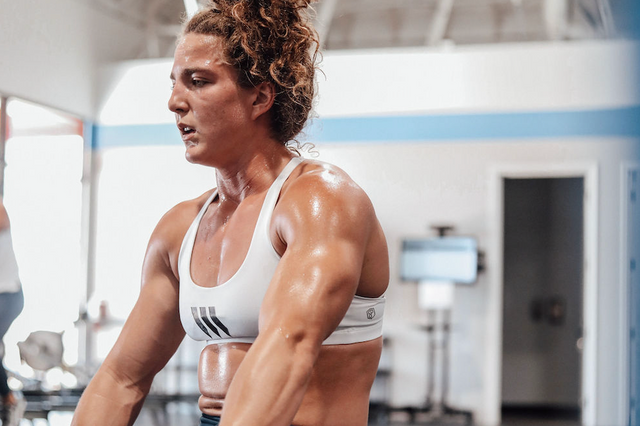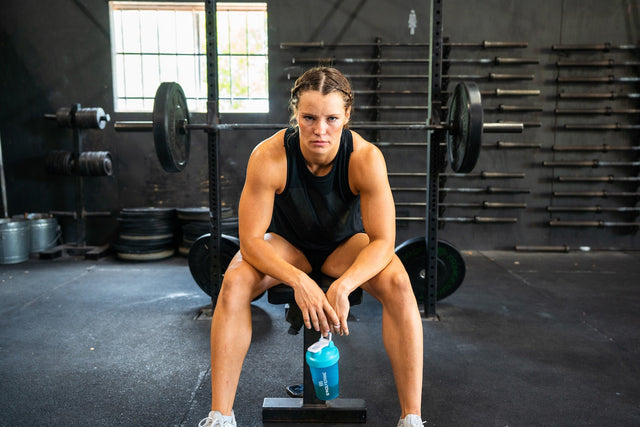Proviron (Mesterolone) is a unique anabolic steroid often used not just for physique enhancement but also for its anti-estrogenic and androgenic properties. Unlike more anabolic compounds, Proviron doesn’t build massive muscle on its own — instead, it’s often stacked for its ability to improve hardness, libido, and estrogen control.
But what happens when you stop taking it? While Proviron doesn’t suppress testosterone as aggressively as other anabolic steroids, discontinuing it can still trigger a rebound effect. Understanding this process — commonly referred to as a hormonal rebound — is crucial for anyone cycling or considering Proviron use.
In this guide, we’ll break down:
→ How Proviron works in the body
→ What happens hormonally when you stop taking it
→ The symptoms of rebound and recovery
→ How to manage the transition safely
What Is Proviron?
Proviron (Mesterolone) is an oral anabolic steroid derived from dihydrotestosterone (DHT). It was originally developed for medical use in the treatment of male hypogonadism, infertility, and certain forms of depression due to its ability to enhance androgen activity without causing severe suppression of natural testosterone production (Saartok et al., Acta Endocrinologica).
Unlike many other anabolic steroids, Proviron is considered weakly anabolic but highly androgenic. This means it doesn’t add much size or strength on its own, but it plays a valuable supporting role:
→ Boosts androgen receptor activity — enhancing muscle hardness and definition.
→ Acts as an anti-estrogen — by binding to sex hormone-binding globulin (SHBG), freeing up more testosterone and reducing estrogenic side effects.
→ Improves libido and mood — often stacked in cycles for its sexual performance benefits and sense of well-being.
Because of these traits, Proviron has been a staple “bridge compound” in bodybuilding, helping athletes look leaner and drier without the heavy suppression that comes from stronger anabolic agents.
How Proviron Works in the Body
Proviron functions differently than most anabolic steroids because it’s structurally derived from dihydrotestosterone (DHT). While its anabolic effects are minimal, its androgenic actions are pronounced — which is why it’s valued more for support than for mass-building.
→ Androgen receptor activation – Proviron strongly binds to androgen receptors, enhancing muscle hardness, density, and vascularity without causing excessive water retention (Saartok et al., Acta Endocrinologica).
→ Anti-estrogenic activity – By binding to sex hormone-binding globulin (SHBG), Proviron frees up more circulating testosterone. This increases the ratio of androgens to estrogens, helping reduce estrogen-driven side effects like water retention or gynecomastia (Shahidi, Clinics in Endocrinology and Metabolism).
→ Libido and mood enhancement – Because of its DHT foundation, Proviron is particularly effective at boosting sex drive, mood, and overall sense of well-being — one of the reasons it’s sometimes prescribed in cases of male infertility or depression.
→ Stacking benefits – Proviron doesn’t add significant bulk on its own, but when stacked, it can improve the effectiveness of other anabolic steroids by reducing estrogen buildup and maximizing free testosterone availability.
In short, Proviron is best understood as a supportive androgen — a compound that enhances the performance, appearance, and hormonal balance of a cycle without being the primary muscle-building driver.
What Happens When You Stop Taking Proviron?
When you discontinue Proviron (Mesterolone), your body shifts back toward its natural hormonal balance — and this transition can trigger what’s known as a hormonal rebound. While Proviron is less suppressive than most anabolic steroids, it still influences androgen and estrogen dynamics in ways you’ll notice when you stop.
→ Loss of anti-estrogenic effect – Proviron binds to sex hormone-binding globulin (SHBG), freeing more testosterone and keeping estrogen in check. Once you stop, SHBG levels rise again, reducing free testosterone and potentially allowing estrogen to rebound (Shahidi, Clinics in Endocrinology and Metabolism).
→ Drop in libido and mood – The DHT-derived activity of Proviron is often linked to improved sex drive and psychological well-being. When withdrawn, many users experience a dip in libido, energy, and mood stability until the body re-establishes its own balance.
→ Possible testosterone fluctuations – Although Proviron is not highly suppressive, long-term use can still blunt natural testosterone production. After stopping, some individuals may see a short period of low T symptoms — fatigue, decreased strength, or mild depression.
→ Physique changes – Without Proviron’s androgenic “hardening” effects, muscle definition may soften slightly due to shifts in water balance and estrogen activity.
In short: stopping Proviron doesn’t cause the severe crashes seen with heavier anabolic steroids, but it does create a rebound phase where estrogen rises, free testosterone drops, and libido can take a hit.
Hormonal Rebound Explained
The term hormonal rebound refers to the body’s natural tendency to overcorrect once an external hormone or modulator is removed. With Proviron (Mesterolone), the rebound is less severe than with heavy anabolic cycles, but it’s still noticeable. Here’s what’s happening under the surface:
→ SHBG rises again – While on Proviron, SHBG (sex hormone-binding globulin) is suppressed, leaving more testosterone “free” and active. After discontinuation, SHBG levels bounce back, binding more testosterone and reducing the pool of free androgens available for muscle, mood, and libido (Shahidi, Clinics in Endocrinology and Metabolism).
→ Estrogen regains dominance – Proviron doesn’t aromatize, but it competes with estrogen for receptor activity. Once it’s gone, estrogen can act more strongly, which may explain water retention, softer appearance, or subtle mood changes.
→ Androgenic “boost” fades – The DHT-like properties of Proviron elevate libido, confidence, and sense of well-being. Stopping it removes that extra androgenic push, leading to a temporary slump until natural testosterone and DHT stabilize (Saartok et al., Acta Endocrinologica).
→ Natural testosterone recovery – Because Proviron is only mildly suppressive, the hypothalamic-pituitary-testicular axis (HPTA) usually recovers quickly. Still, some users may feel a short dip in energy, strength, or libido while hormone production normalizes.
The rebound in simple terms: after Proviron, your body temporarily swings toward lower free testosterone and higher estrogen activity before finding its balance again.
Post-Cycle Therapy (PCT) After Proviron
One of the most common questions is whether Proviron (Mesterolone) requires a post-cycle therapy (PCT). Because it is mildly suppressive compared to other anabolic steroids, the answer depends on how you used it and what else it was stacked with.
→ Proviron alone – If used solo and for a short duration, Proviron rarely shuts down natural testosterone production completely. In most cases, the body rebounds on its own, and a formal PCT may not be necessary (Shahidi, Clinics in Endocrinology and Metabolism).
→ Proviron in a stack – When combined with stronger anabolic steroids, suppression is far more significant. In this scenario, a structured PCT with SERMs like Tamoxifen or Clomiphene is typically required to kickstart natural testosterone production (Sessa & Silva, Frontiers in Pharmacology).
→ Managing rebound estrogen – Because Proviron acts as an anti-estrogen, stopping it can allow estrogen activity to rise again. Some athletes include a mild aromatase inhibitor (AI) during transition, but this should only be considered under medical guidance.
→ Lifestyle support – Regardless of PCT, focusing on sleep, nutrition, and recovery supplements (like zinc, magnesium, and DHEA) can help stabilize hormones and smooth out the post-cycle rebound.
Post-Cycle Therapy (PCT) Routine After Proviron
If Proviron (Mesterolone) was used alone, a full PCT is often unnecessary because suppression is minimal. But when it’s stacked with stronger anabolic steroids, a structured PCT can help restore natural testosterone production and prevent rebound estrogen dominance. Here’s an evidence-based framework with added supportive supplementation:
→ Weeks 1–4: Tamoxifen (Nolvadex) 20–40 mg daily
Stimulates natural testosterone by blocking estrogen receptors in the hypothalamus and pituitary, encouraging LH and FSH release.
→ Weeks 1–4: Clomiphene (Clomid) 25–50 mg daily
Often stacked with Tamoxifen for a synergistic boost to endogenous testosterone recovery (Sessa & Silva, Frontiers in Pharmacology).
→ Optional AI: Arimidex (Anastrozole) 0.25–0.5 mg every other day
Used only if estrogen rebound symptoms are present (water retention, gynecomastia). Should be applied conservatively and ideally monitored by a clinician.
→ ZMT (6 capsules nightly)
A natural testosterone and sleep support formula that includes zinc, magnesium, theanine, ashwagandha, and other adaptogens to help optimize hormone balance and recovery (Swolverine ZMT).
→ DHEA (100 mg daily)
Supports adrenal androgen production, helping offset low testosterone symptoms and bridging hormonal recovery when natural levels are suppressed (Labrie et al., Journal of Steroid Biochemistry & Molecular Biology).
→ Additional support
Zinc, vitamin D3, omega-3 fatty acids, and adequate dietary protein all play important roles in stabilizing endocrine health post-cycle.
→ Lifestyle foundations
Prioritize 7–9 hours of sleep, manage stress, follow a nutrient-dense diet, and maintain a structured (but not overly taxing) resistance training program.
Key takeaway: A tailored PCT routine with Tamoxifen, Clomid, ZMT, and DHEA provides a powerful foundation for restoring hormone balance, managing rebound estrogen, and supporting mood, libido, and strength after Proviron use.
Side Effects of Proviron and Stopping Use
Even though Proviron (Mesterolone) is considered one of the milder anabolic steroids, it’s not free of side effects. Both while using it and after discontinuation, there are potential issues to be aware of:
→ Androgenic effects – As a DHT derivative, Proviron can trigger hair loss, acne, and oily skin in individuals prone to androgen sensitivity (Saartok et al., Acta Endocrinologica).
→ Libido fluctuations – Proviron is often praised for boosting sex drive, but stopping it can lead to a noticeable dip in libido and performance until natural hormone production stabilizes (Shahidi, Clinics in Endocrinology and Metabolism).
→ Mood changes – Enhanced well-being while on-cycle may be followed by mood swings, irritability, or mild depression during rebound.
→ Testosterone suppression (mild) – While less suppressive than stronger anabolic steroids, long-term Proviron use can still blunt natural testosterone output, leading to fatigue, low motivation, and reduced strength after discontinuation.
→ Cardiovascular strain – Like other oral androgens, Proviron can impact cholesterol levels, lowering HDL (“good cholesterol”) and raising LDL, which may increase long-term cardiovascular risk (Shahidi, Clinics in Endocrinology and Metabolism).
→ Rebound estrogen dominance – Since Proviron acts as an anti-estrogen during use, stopping it may allow estrogenic activity to rise unchecked, leading to water retention, softer muscle appearance, or even gynecomastia in sensitive users.
Legal Status of Proviron
Proviron (Mesterolone) is a prescription-only drug in many parts of the world, originally developed for clinical use in men with low testosterone, infertility, and hypogonadism. While it still has limited medical applications in some regions, its status today is largely shaped by anti-doping regulations and controlled substance laws.
→ United States – Proviron is classified as a Schedule III controlled substance under the Anabolic Steroid Control Act. This means possession without a prescription is illegal, and it’s not approved for sale in U.S. pharmacies (DEA, U.S. Department of Justice).
→ Europe – In certain European countries, including Germany, Proviron was historically prescribed for male infertility and androgen deficiency. However, its medical use has declined, and in many places it has been withdrawn from pharmaceutical markets due to limited therapeutic value and concern for misuse.
→ Canada & Australia – Classified as a controlled substance, making non-prescription possession or sale illegal.
→ Sports and anti-doping – Proviron is explicitly banned by the World Anti-Doping Agency (WADA), and athletes who test positive for mesterolone face suspensions and sanctions (WADA Prohibited List).
Conclusion: Proviron, Hormonal Rebound, and PCT
Proviron (Mesterolone) has long been considered one of the “milder” anabolic steroids — valued for its androgenic benefits, anti-estrogenic properties, and libido support rather than raw muscle-building power. But when you stop taking it, the body still responds with a hormonal rebound: SHBG levels rise, free testosterone drops, and estrogen regains influence. This can lead to mood swings, libido crashes, water retention, and a softer physique.
That’s why understanding Proviron PCT matters. While Proviron alone may not always require a full post-cycle therapy, stacking it with more suppressive anabolics often does. A well-structured PCT — using Tamoxifen, Clomid, ZMT (6 capsules nightly), and DHEA (100 mg daily) — supports hormone recovery, balances estrogen, and helps restore natural testosterone production.
Legally, Proviron is a controlled substance in the U.S., Canada, Australia, and many other countries, and it is banned by WADA in professional sports. That means access is limited to prescription use in certain regions, and athletes must avoid it due to doping rules.
The takeaway: While Proviron can be an effective support compound, it’s not without consequences. Discontinuation comes with a rebound phase, and responsible PCT protocols are essential for long-term hormonal health.
⚠️ Disclaimer: This article is for educational purposes only and is not medical advice. Always consult a qualified healthcare professional before starting, stopping, or combining any supplement, medication, or performance-enhancing compound. Dosages mentioned here are based on clinical and research data and do not apply to individual use.







